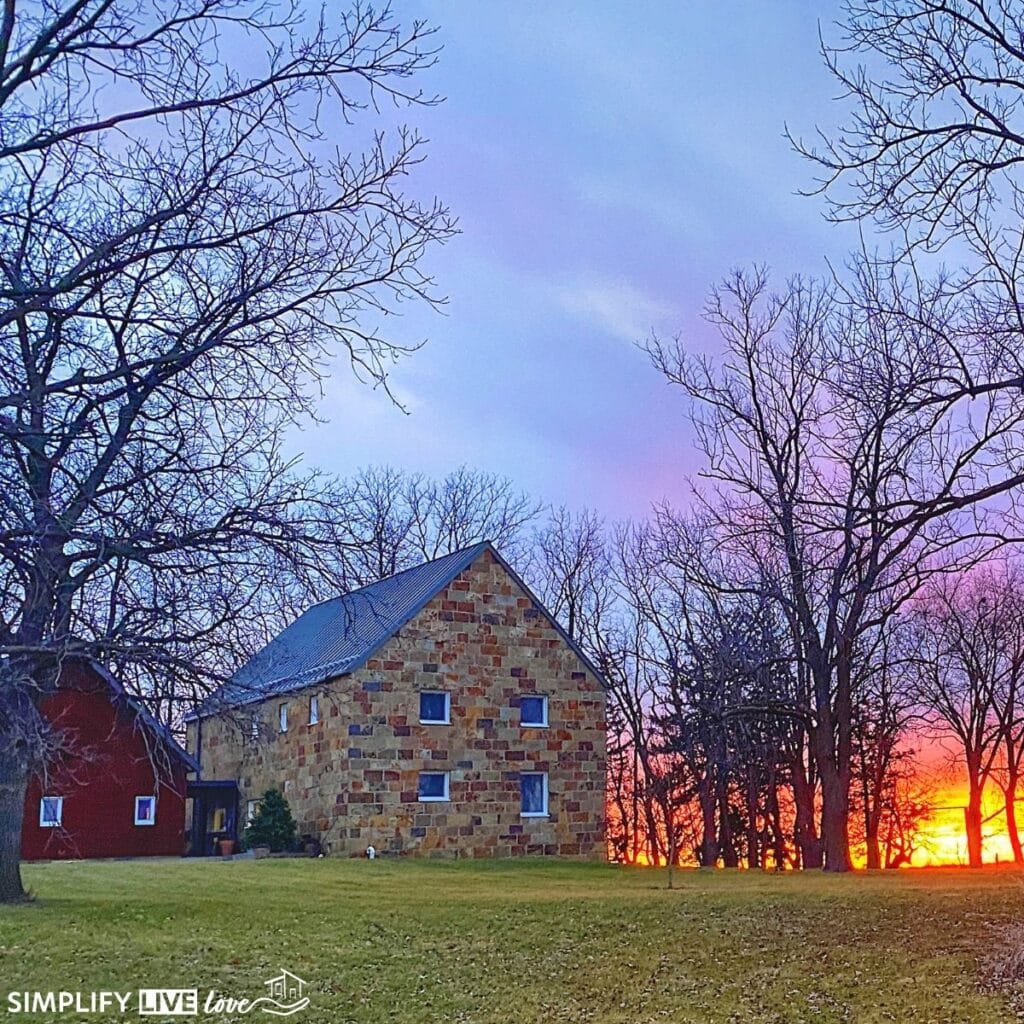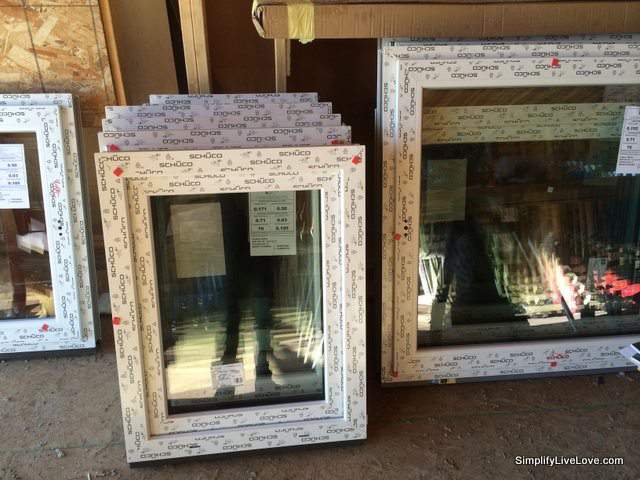9 Easy Ways to Save Energy and Money At Home
on Nov 03, 2025
This post may contain affiliate links. Please read our disclosure policy.
Rising utility bills can sneak up fast. The good news is you don’t need solar panels or a full home renovation to see real savings. A few small upgrades can make your house more efficient, comfortable, and eco-friendly.
If you’re trying to lower bills and live more sustainably, start with quick wins. Seal up air leaks, switch to LED lights, and make a few smart changes to your daily habits. You’ll notice the difference right away — especially when your next bill arrives.

If you’d like to save money with a more energy-efficient home, you might enjoy:
- How to Eat Seasonally to Improve Your Health, Save Money, and Benefit Planet Earth
- 45 Easy-To-Acquire Habits To Reduce Waste at Home
- Less Stuff More Living: How to be a Minimalist Family
Here are nine simple upgrades that save energy and money — without sacrificing comfort or style.
Table of Contents
Article Summary
Small, affordable home upgrades can make your house more efficient, comfortable, and eco-friendly while cutting energy costs.
🪟 Seal leaks – Use caulk, weatherstripping, and insulation in attics, basements, doors, and windows.
💡 Switch to LEDs – Replace old bulbs and add smart controls for lighting that saves money and energy.
🌡️ Tune up HVAC – Change filters often and install a programmable thermostat for better control.
🚿 Use less hot water – Add low-flow fixtures and insulate pipes to reduce water heating costs.
🌞 Work with nature – Open blinds for sunlight in winter and create cross-breezes on mild days.
Seal Up the Hidden Leaks
If your home always feels drafty, you’re probably losing air where you can’t see it. Tiny gaps around windows, doors, and vents let conditioned air escape and outside air creep in. Sealing these spots is one of the fastest, cheapest ways to boost efficiency.

Focus on Doors and Windows
Walk around your home on a windy day. Do you feel air coming through around the doorframe or window edges? That’s energy slipping away. Weatherstripping kits, caulk, and draft stoppers can fix most leaks in an afternoon. They’re inexpensive, easy to apply, and make an immediate difference in comfort.
Homes in humid or breezy regions — like parts of Florida — tend to lose even more energy this way. Local service providers, such as Lakeland lawn care professionals, often remind homeowners that exterior upkeep ties directly into efficiency. Overgrown shrubs, clogged gutters, and blocked vents can trap moisture and affect how well your home seals. Keeping the exterior tidy supports all the indoor energy work you do.
Pin this now to find it later
Pin ItDon’t Forget Attics and Basements
Attics and basements are notorious for energy leaks. Insulation that’s too thin or worn out can’t keep up with temperature swings. Adding a few rolls of fiberglass batts or using spray foam around joists can dramatically improve comfort year-round. It’s a straightforward DIY task that pays for itself within a season or two.
Upgrade to Energy-Efficient Lighting
Lighting often flies under the radar, but it quietly eats into your electric bill. The fix is simple: switch to better bulbs and smarter controls.
Switch to LEDs
LED bulbs use up to 75% less energy than incandescent ones and can last ten times longer. That means fewer replacements and smaller bills. Start with the lights you use most — the kitchen, living room, or porch — and swap them first. Today’s LEDs come in soft, warm tones that feel cozy rather than harsh, so you won’t sacrifice atmosphere for efficiency.
Add Smart Controls
Dimmers, motion sensors, and smart plugs give you more control over when and how your lights run. A motion sensor in the hallway or bathroom prevents lights from being left on all night. Dimmers let you lower brightness when you don’t need full power.
If you’re not sure how to get started or want help planning broader upgrades, it can be worth it to use an energy efficiency company for a quick assessment. They can show you where your home is wasting power and suggest small changes that add up fast.

Improve Heating and Cooling Efficiency
Your HVAC system is likely the biggest energy user in your home. Keeping it tuned up can save you hundreds every year.
Clean or replace filters every one to three months. Dirty filters force the system to work harder, using more electricity. Schedule a professional inspection before the hottest and coldest seasons. A quick tune-up keeps things running smoothly and prevents costly breakdowns later.
If your thermostat is still the basic dial type, upgrade to a smart or programmable version. You can set it to automatically adjust when you’re asleep or away, trimming hours of unnecessary heating and cooling each week. Many models are DIY-friendly and take under an hour to install.
Optimize Water Use
Water heating is another big energy draw. Reducing hot water waste can trim both your power and water bills.
Swap your showerheads for low-flow versions. Modern designs still feel strong but use far less water. The same goes for faucet aerators — tiny inserts that mix air into the stream, cutting water use without losing pressure.
Insulating your hot water pipes is another quick win. Foam sleeves slip right over the pipes and keep water hotter for longer. That means less waiting, less waste, and a lower workload for your water heater.
Appliances and Everyday Habits
Sometimes the easiest savings come from how you use what you already own. Appliances account for a large portion of household energy use, but small shifts make a difference.
When it’s time to replace something, look for the Energy Star label. These models might cost a bit more upfront, but they use less power and water over time. Focus on your biggest energy hogs — refrigerators, washers, and dryers.
Day to day, simple habits add up. Wash clothes in cold water whenever possible. Run the dishwasher only when it’s full. Skip the heated dry cycle and let dishes air-dry. Unplug devices that aren’t in use, especially chargers and small appliances that keep drawing power even when turned off.

Harness Natural Light and Airflow
Sometimes the most effective upgrades don’t cost a thing. Take advantage of what your home already offers. Open curtains during the day to let sunlight warm your space naturally. At night, close them to keep the warmth in. In summer, do the opposite — close blinds during peak heat to stay cool.
On mild days, open windows on opposite sides of your home to create cross-breezes. This natural airflow can keep temperatures comfortable without switching on the air conditioner. It’s simple, free, and surprisingly effective.
Turning Small Steps into Big Savings
Energy savings don’t have to come from expensive renovations or major tech upgrades. Most start with small, thoughtful improvements — sealing leaks, upgrading lights, tuning your HVAC, or adjusting daily habits. Each step brings you closer to a more comfortable, efficient home and smaller monthly bills.
Pick one area to tackle this weekend. Once you see how easy it is, you’ll find yourself looking for the next small change that saves you money and makes your home feel better all year round.











